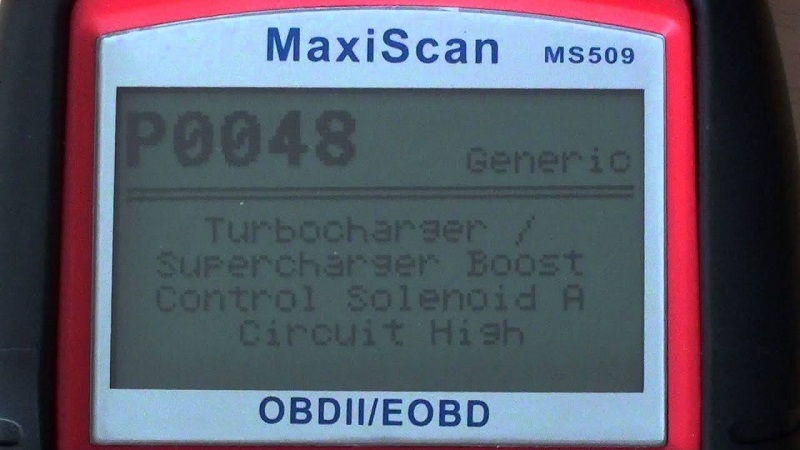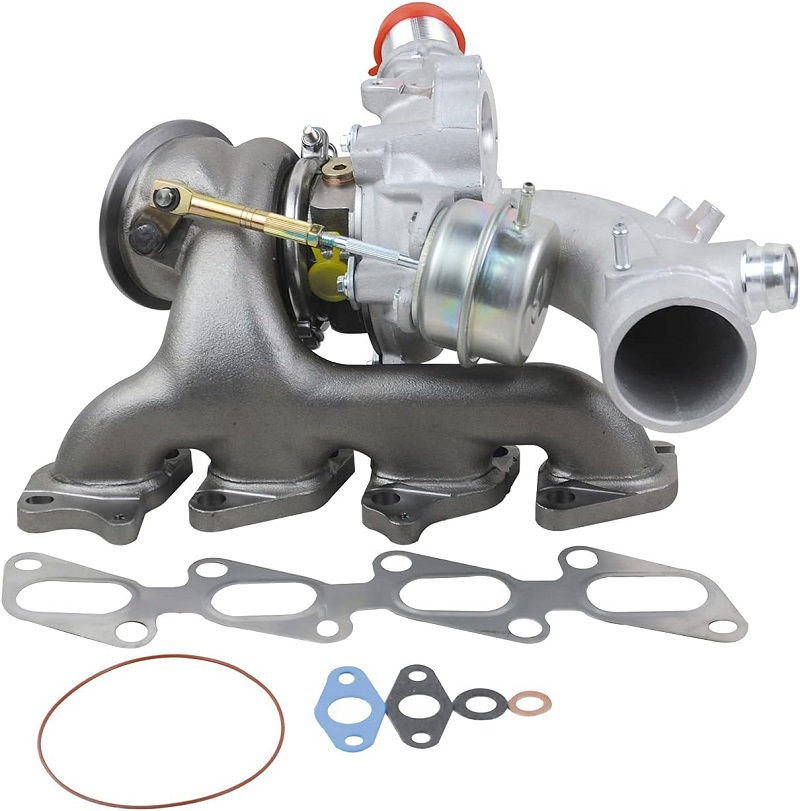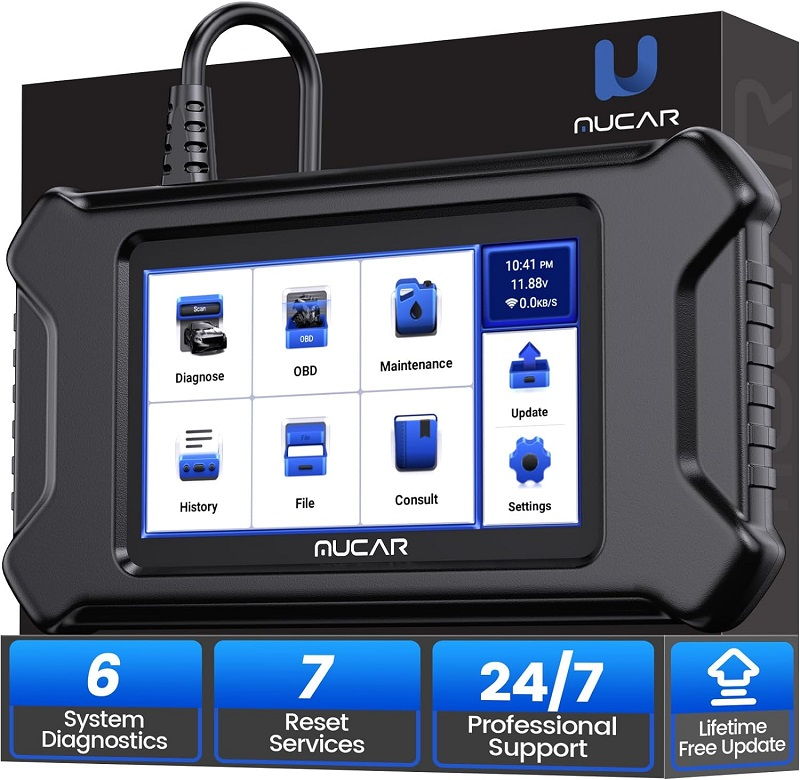This post contains affiliate links. This means I will make a commission at no extra cost to you should you click through and make a purchase [ “As an Amazon Associate, I earn from qualifying purchases.” ]. Read the full disclosure here.
Unraveling the P0048 Trouble Code: Turbocharger/Supercharger Boost Control “A” Circuit High GuideMechanic.Com In the intricate world of automotive diagnostics, the emergence of the P0048 trouble code serves as a diagnostic signal, indicating potential irregularities within the turbocharger or supercharger boost control system.
While seemingly cryptic to the untrained eye, this alphanumeric sequence encapsulates a specific issue that warrants attention from both drivers and automotive technicians alike.
In this comprehensive guide, we embark on a journey to dissect the intricacies of the P0048 trouble code, exploring its causes, symptoms, and viable solutions.
See Also: P0046 Turbocharger/Supercharger Boost Control “A” Circuit Range/Performance
P0048 Turbocharger/Supercharger Boost Control “A” Circuit High
Understanding the P0048 Trouble Code:

P0048 is classified as an OBD-II diagnostic trouble code, pinpointing an anomaly within the turbocharger or supercharger boost control circuit, particularly designated as “A”.
More precisely, it denotes a condition wherein the boost control circuit operates at a higher-than-expected voltage level, triggering a fault code and necessitating further examination.
P0048 Turbocharger/Supercharger Boost Control “A” Circuit High
Causes of P0048:
The manifestation of the P0048 trouble code can stem from a myriad of underlying factors, including:
Faulty Boost Control Solenoid:
The boost control solenoid plays a pivotal role in modulating boost pressure within the forced induction system. A malfunction within this solenoid, attributed to wear, electrical issues, or internal failure, can contribute to the activation of the P0048 code.
Wiring Abnormalities:
Damaged, corroded, or compromised wiring within the boost control circuit can impede the transmission of electrical signals, leading to a surge in voltage levels and triggering the P0048 trouble code.
Boost Pressure Sensor Dysfunction:
A defective or malfunctioning boost pressure sensor may provide inaccurate readings to the engine control module (ECM), resulting in improper boost pressure regulation and the subsequent onset of the P0048 code.
Intake or Exhaust System Leak:
Leaks within the intake or exhaust system, such as cracked hoses, loose connections, or damaged gaskets, can disrupt the functionality of the turbocharger or supercharger, contributing to the activation of the P0048 trouble code.
P0048 Turbocharger/Supercharger Boost Control “A” Circuit High
Symptoms of P0048:

The emergence of the P0048 trouble code may manifest through a range of discernible symptoms, including:
Enhanced Engine Performance:
One of the hallmark symptoms associated with P0048 is an observable increase in engine power and overall performance. Drivers may experience enhanced acceleration, improved throttle response, and heightened towing capabilities.
Check Engine Light (CEL) Illumination:
The illumination of the check engine light serves as an initial indicator of a potential underlying issue. Upon diagnostic scanning, the P0048 trouble code is retrieved, prompting further investigation.
Potential Overboost Conditions:
In certain instances, the onset of the P0048 trouble code may coincide with overboost conditions, wherein the turbocharger or supercharger generates excessive boost pressure, potentially leading to engine knocking or detonation.
Fuel Efficiency Variations:
An aberration within the turbocharger or supercharger boost control system can influence fuel efficiency, resulting in fluctuations in fuel consumption and mileage per gallon.
P0048 Turbocharger/Supercharger Boost Control “A” Circuit High
Diagnosing and Addressing P0048:

Effectively diagnosing and remedying the P0048 trouble code necessitates a systematic approach, encompassing the following steps:
Code Retrieval:
Utilize an OBD-II scanner to retrieve the stored trouble code(s) within the vehicle’s ECM, confirming the presence of the P0048 code and any accompanying codes for comprehensive assessment.
Visual Inspection:
Conduct a meticulous visual inspection of the boost control solenoid, wiring harness, and associated components for any visible signs of damage, wear, or corrosion. Rectify any identified issues promptly.
Boost Control Solenoid Testing:
Employ a multimeter to assess the functionality of the boost control solenoid, verifying proper operation and electrical continuity. If deemed faulty, replace the solenoid with a compatible replacement unit.
Wiring Continuity Check:
Methodically inspect the wiring harness connected to the boost control solenoid, ensuring continuity and integrity throughout the circuit. Address any breaks, abrasions, or corroded connections through repair or replacement.
Boost Pressure Sensor Evaluation:
Evaluate the boost pressure sensor to ascertain its accuracy and reliability in providing pertinent data to the ECM. Substantiate proper functionality or replace the sensor if deemed defective.
Intake and Exhaust System Inspection:
Thoroughly inspect the intake and exhaust systems for any leaks, cracks, or compromised components that could undermine turbocharger or supercharger performance. Seal or replace defective elements as necessary.
ECM Reset and Road Testing:
Following the completion of requisite repairs, reset the ECM to clear stored trouble codes using the OBD-II scanner. Subsequently, embark on a comprehensive road test to validate the efficacy of interventions and ensure the absence of recurring issues.
P0048 Turbocharger/Supercharger Boost Control “A” Circuit High
Conclusion:
See Also: P0047 Turbocharger/Supercharger Boost Control “A” Circuit Low
The P0048 trouble code serves as a diagnostic beacon, illuminating potential irregularities within the turbocharger or supercharger boost control system.
By discerning its underlying causes, recognizing associated symptoms, and adhering to a structured diagnostic protocol, drivers and technicians can navigate the resolution process adeptly, restoring optimal engine performance and functionality.
For those apprehensive or unequipped to undertake DIY diagnostics and repairs, seeking assistance from certified automotive professionals is always advisable, ensuring thorough and proficient resolution of the P0048 trouble code.
- Used Dump Trucks for Sale Under 5000 - July 18, 2025
- Used Dump Truck for Sale Under $10000 - July 18, 2025
- Used Pickup Truck with Dump Bed for Sale - July 18, 2025
